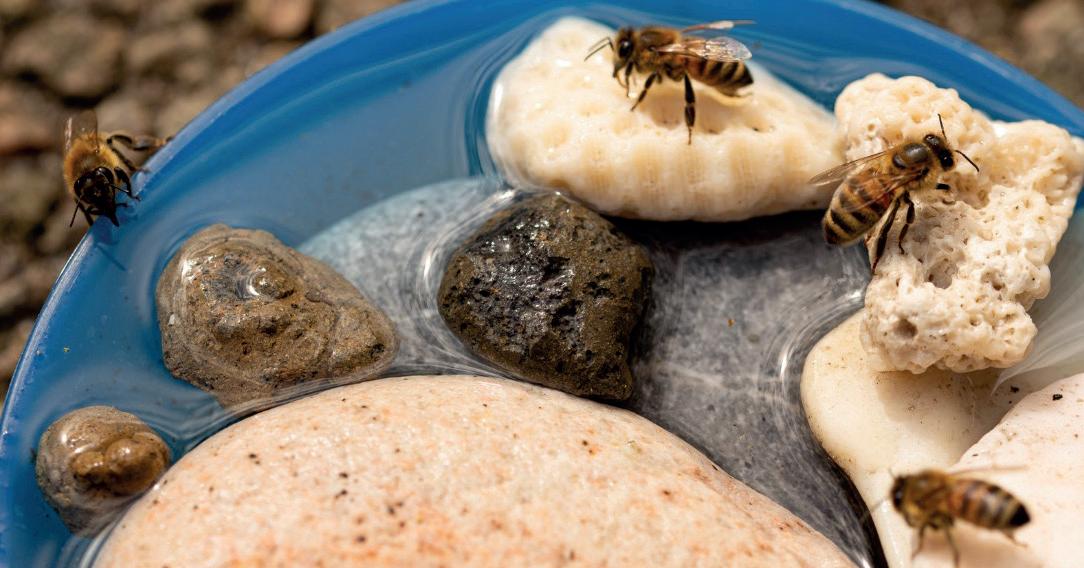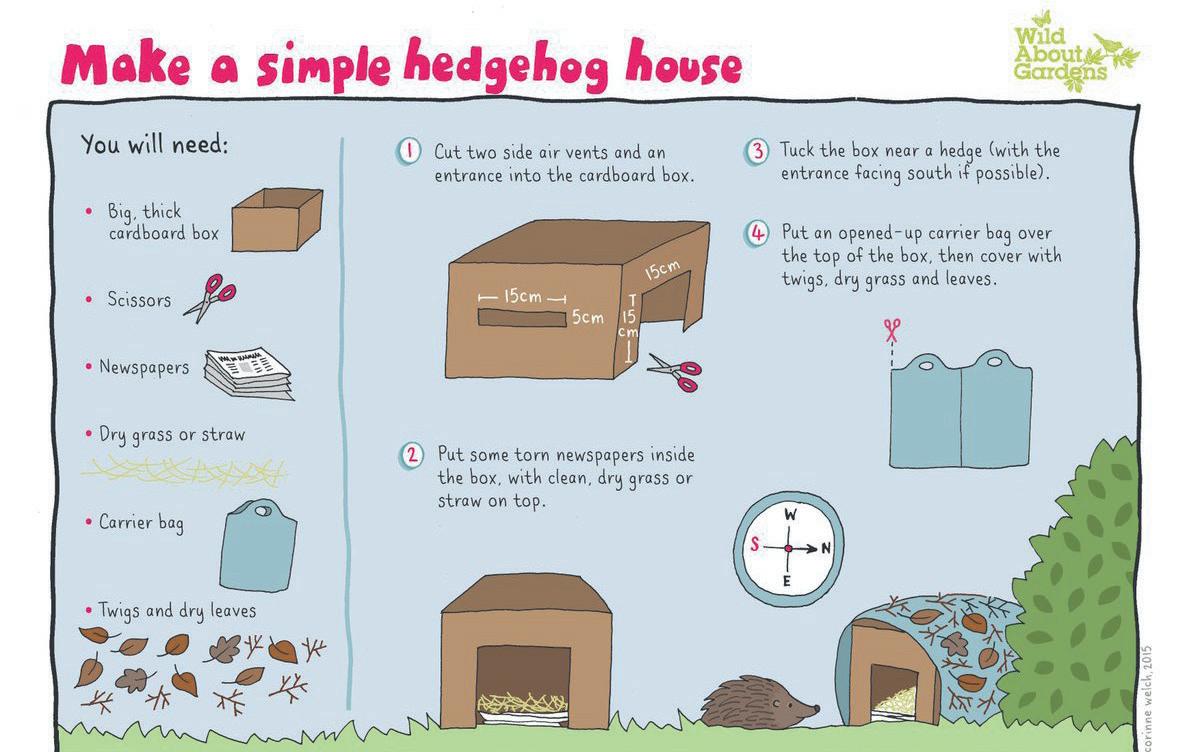
3 minute read
Season’s Greetings: Working with Wildlife
By ROWAN LANNING
Summer is a busy & bustling time for wildlife, and there are many things that we as humans can do to help out our animal neighbours this season. For example, if you sowed wildflower seeds in spring, both you and the pollinators should be enjoying their blossoms by now. Now that you’ve helped to feed the pollinators, you can help in providing hydration as well! Help our nearly 100 species of native bees by providing a bee drinker. You can set out a small saucer, tray, or even an old frisbee and fill it with things like smooth pebbles or even glass marbles – something that will stick just out of the surface to provide
a place for bees to land and take a drink without risking drowning or getting their wings wet, as they are unable to fly when their wings become saturated with water. You can place your bee drinker in the shade, ideally close to flowers so that the bees can easily find their way to it, and make sure to top it up with fresh water regularly. As mentioned in last season’s segment on ‘working with wildlife’, the NoMow-May campaign encourages people to avoid cutting their lawns in the month of May, and equally too throughout the whole summer as late as one can possibly help it –this practice allows pollinators and other animals to use these areas for food as well as wildlife corridors, natural spaces that facilitate movement
through the natural landscape. Of course, this doesn’t have to mean completely going without mowing all summer if it can’t be helped –simply mowing less or aiming to mow in a more environmentally friendly way can be of great benefit too. You can also do your part to address the animal housing crisis –putting up bird boxes, insect hotels, hedgehog huts, pine marten dens, or even creating a small pond for amphibians if able – homes like these can provide a safe place for wildlife to move in and settle down, increasing the biodiversity of your area and preventing our animal neighbours from moving into less desirable locations – pine martens for example will sometimes take up in people’s attics if there are no suitable locations elsewhere!












